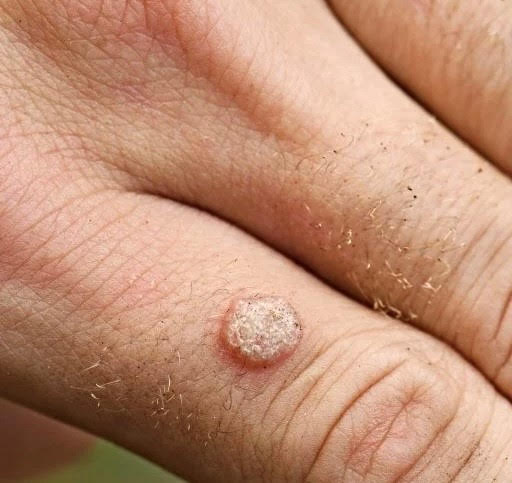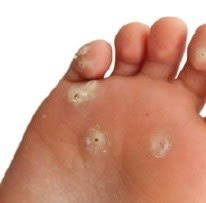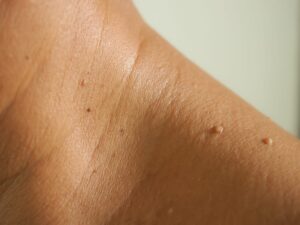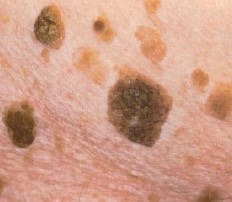Call us now or Book Online
Our friendly and knowledgeable staff are waiting to take your call.

01483 230481
0345 4599972
Cryotherapy is a ‘freezing’ treatment for skin lesions such as warts, verrucas or skin tags, as well as seborrheic keratoses (those warty brown lesions which can appear anywhere) and solar keratoses (patches of sun damage which are premalignant).
The idea is to freeze the abnormal lesion and a small amount of surrounding normal skin. When the frozen cells subsequently thaw out, the treated skin cells essentially die and those cells left regenerate themselves over time. This all happens on the surface layer of the skin called the epidermis.
Cryotherapy uses liquid nitrogen, which drops the temperature of skin quickly to way below freezing. The nitrogen is applied through a ‘gun’ that sprays the liquid onto the skin and our doctors are highly experienced in its application.
After cryotherapy, blistering and redness often occur and the site can look as if it’s been burnt for a week or more. In time, new fresh skin cells grow and heal the area that was treated.
Initially, our doctors will provide a consultation to discuss your concerns and agree a treatment plan. Should cryotherapy be a suitable option for you we will normally be able to provide the initial treatment there and then. We charge for an initial assessment consultation and for each cryotherapy treatment needed. You will only pay one consultation fee and subsequently a fee for each attendance for cryotherapy. Cryotherapy charges are linked to the number of lesions treated – 1-4 lesions then individual lesions are charged at £30 each. It is of course possible for your first treatment to be for 5-10 lesions and your next treatment to be for only 1-4 lesions as some of them will have resolved with only one treatment.
| Initial consultation | £125 |
| Cryotherapy for 1-4 lesions | £120 |
| Cryotherapy for each additional lesion | £30 |
Example of cryotherapy pathway:
Patient attends for consultation with two warts on middle finger. Initial assessment consultation for diagnosis and guidance regarding treatment options. Patient opts for same day cryotherapy. CHARGE is £125 + £120 = £245. A follow-up at 4 weeks is suggested if lesion not fully resolved. The patient attends for a second treatment to one wart. CHARGE is £120.


Verrucas are warts on the soles of your feet. They may have tiny black dots in the centre – these are where blood has clotted in tiny blood vessels on the surface of your skin. They may be painful when you put weight on them. Verrucas tend to look quite flat because of the pressure put on them. Sometimes, if you have clusters of verrucas, they can fuse together. These are called mosaic warts.
Remember – there’s no reason why you can’t continue to take part in activities, such as sports or swimming, if you have a wart or verruca. But do follow all the advice above, to avoid passing the virus onto other people.
Verrucas are caused by infection of your skin with the human papilloma virus (HPV). They can spread from person to person by direct skin contact or by contact with floors or surfaces contaminated with the virus. Although verrucas are contagious, it’s thought that the risk of catching them is fairly low. You’re more likely to get infected if your skin is damaged or wet, so infection can be linked to swimming pools and communal showers. You can also infect yourself. If you scratch a verruca, the viral particles may spread to other areas of your skin.
You’re more likely to develop verrucas if you have a weakened immune system. This might be because you have a medical condition or are taking medicines that suppress your immune system.

A condition characterised by painless non-cancerous skin growth attached to skin by a small thin stalk.

A seborrheic keratosis is a common benign skin growth; they are often brown and warty and have a ‘stuck-on’ appearance. Most people will have at least one in their lifetime. They tend to appear in mid-adulthood and their frequency increases with age. They are harmless and don’t require treatment, but you can have them removed if they bother you.
People sometimes report:
Itching
Irritation from friction
Bleeding
If these symptoms annoy you, you may want to have the growth removed
You should always have new skin growths clinically diagnosed to make sure they aren’t cancerous. Different kinds of skin growths can be hard to tell apart from each other.
If it is clearly a seborrheic keratosis, you might want to have it removed if it becomes itchy or irritated or you don’t like the look of it.
How is seborrheic keratosis removed?
Cryotherapy. We use liquid nitrogen to freeze the growth. This will cause it to fall off within a few days or weeks. Cryotherapy is a common choice when the diagnosis is clear and there is no need to preserve a sample of the growth for biopsy. One possible side effect is that the skin where the growth was may lose some of its pigment and look lighter.
We don’t know exactly why these growths occur, but we can look at the circumstances that often go along with it. The first is age: seborrheic keratoses are especially common in adults over 50, and they tend to multiply as people get older. Some studies suggest that sun exposure may increase their occurrence. They also appear more frequently in families, which suggests that genetics may play a role. They are not viral or bacterial. They don’t spread and they aren’t contagious.
Seborrheic keratoses usually grow slowly and may develop their texture gradually over time.
Our friendly and knowledgeable staff are waiting to take your call.

01483 230481
0345 4599972